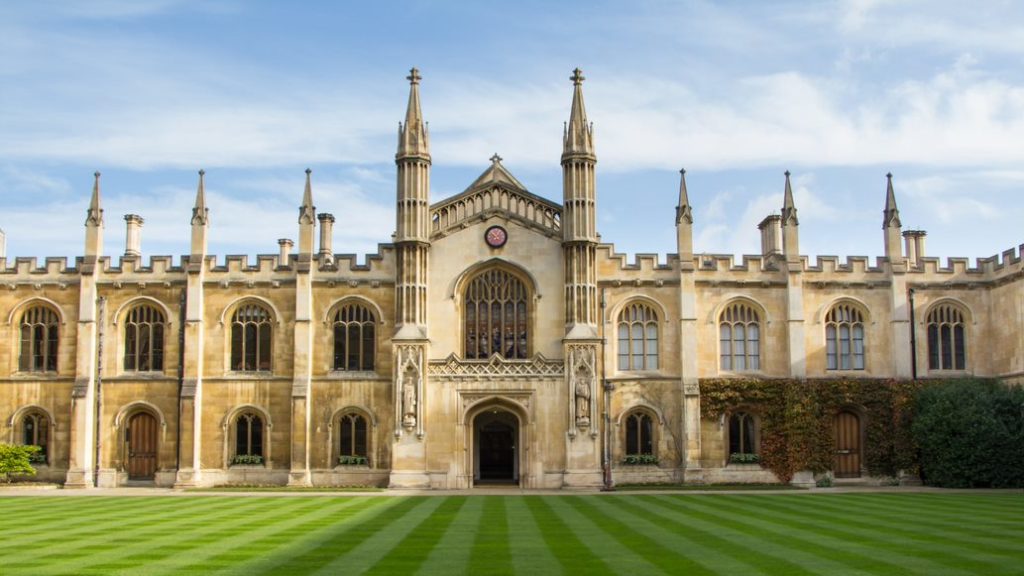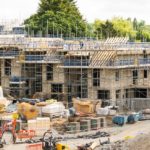Sector - Environment
Maintaining a Heritage Site

Victor Chirilas, Director of Mainmark Ground Engineering, UK discusses subsidence in heritage buildings and when to seek professional help.
Caring for the long-term health of any heritage building brings unique challenges. Buildings that have stood for hundreds of years, have their own cultural and historical significance and, whatever their purpose – a school, a church or a stately home – they have a special place in the communities in which they still stand. However, the methods and the materials used in their original construction, don’t always stand the test of time and issues of subsidence are one of the most common problems.
Keeping historic buildings safe and in use without altering the makeup of the building or damaging other unique features is top priority, and any work undertaken should maximise the life expectancy and sustain its historical significance. Careful preservation using appropriate, non-invasive methods from experienced ground engineering specialists is key.
What are the issues in remediating heritage buildings?
Heritage buildings differ around the world in design, build and foundation construction. Yet, due to their age, they often suffer from similar problems.
Understanding of subsidence and its causes has grown in the last century and most modern buildings are designed with appropriate foundations and sophisticated drainage systems. Historically this was not the case and heritage buildings often have issues with water ingress into the foundations. This can impact every building differently, depending on the soil type it was built on. For example, sandy soils are easily disrupted by water, as the particles are washed out of the soil leading to sections collapsing. As a result of this, the building above can subside.
Traditionally, these older buildings were constructed with shallow foundations or footings, many just resting on the soil or on layers of loose stones. While this allows the building to change with the seasons, it can leave it vulnerable to subsidence, particularly if there has been any attempt to alter or ‘update’ the building with modern services or alterations. This is because a building with shallow foundations moves with the ground as it sits on the top of it, whereas deeper foundations transfer the load further down where the soil typically doesn’t fluctuate as much.
How do you maintain a heritage building?
Many heritage buildings have legal restrictions in place to help preserve the building’s integrity and history, so before undertaking any work, consultation with the relevant authority is recommended. However, there are a number of things building owners can do to prevent structural issues occurring before it’s too late.
The first thing to do is assess the drainage. While it may not be possible to make significant changes, it is essential that proper maintenance is conducted. This includes ensuring drains are free-flowing with no blockages that could cause an overflow, as a consistent flow of water leaking into the soil can saturate the ground and wash away part of the foundations.
Assessing the grounds around the building is also crucial, as the roots of trees and shrubs can suck moisture from the ground and cause settlement if they are in close proximity to a building. If there is a tree close to the property, make sure it is managed and maintained so that it does not become a problem and when planting new trees ensure that they are not close to a building.
How do you know when an historic building needs specialist work?
As stated before, movement in old buildings is normal but professional help should be sought when this movement is ongoing and begins to threaten the use or safety of the structure.
When evaluating a subsidence issue in a building it is good to understand if it is a sudden change or a historic change in the movement. New cracking is good indicator here for example, if there are cracks over 5mm in size that are continuing to grow, then ground engineers can be called upon to help strengthen the foundations and stabilise the structure preventing future movement as well as offer to raise the building and reduce or even close the cracks back up
Can subsidence be repaired under a heritage building?
To an extent all structures can have their foundation issues remediated. How much work should be undertaken depends on the structure. With heritage sites the aim is to strengthen the ground and preserve the structure whilst avoiding the risk of moving it too much. Depending on the extent of the subsidence the structure can also be re-levelled by lifting it.
There are two options available; traditional concrete underpinning or modern resin injection methods. At Mainmark, our proprietary Teretek® engineered resin is a two-in-one solution that can improve ground bearing capacity and re-level structures, with minimal intrusion.
The process is likened to key-hole surgery because it is injected through very small tubes into the ground beneath the foundation in a controlled manner, to fill voids and strengthen the ground that has subsided. This can also help raise the building back to level. In cases where more substantial lift and strengthening is required, Mainmark’s JOG Computer Controlled Grouting technology is a reliable and accurate solution.
As subsidence continues to become one of the biggest problems affecting older buildings in Britain today, it is critical that owners are aware of the advanced solutions now available, helping to effectively repair the ground to ensure the property stands on stable foundations for many more years to come.
If you would like to read more stories like this, then please click here
Related Articles
More Environment Features
- Government correct to head off Climate and Nature Bill
7 Feb 25
The ‘Climate and Nature Private Members’ Bill’, seeks to set new legally binding targets for climate and nature.
- Biodiversity Net Gain Now in Force – What Does It Mean for You?
12 Jul 24
The UK has significantly advanced by implementing Mandatory Biodiversity Net Gain (BNG) in the ongoing effort to balance development with conservation.
- Building a sustainable built enviornment – On the path to Net Zero
5 Jan 24
How the sector can contribute to the transition to a net zero economy.






